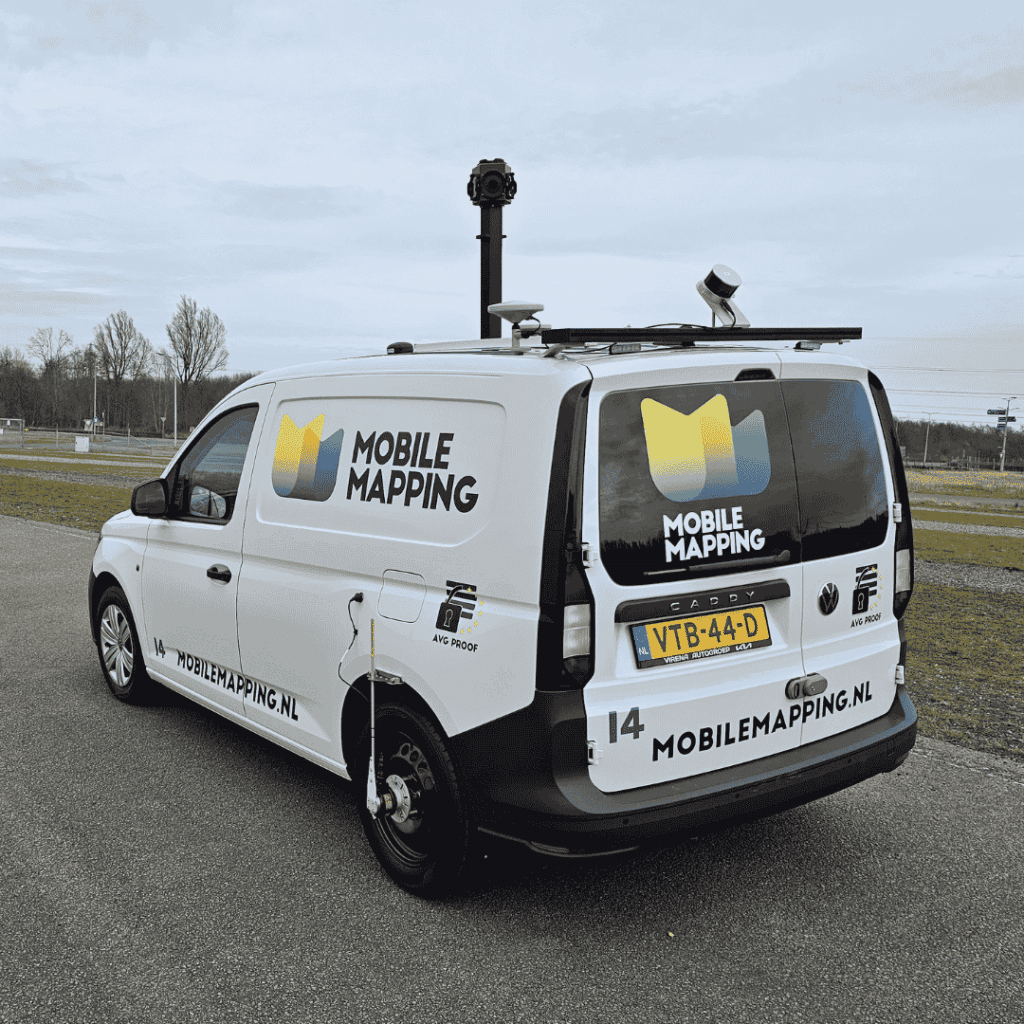AI-InfraSolutions' Proactive Data Capture Boosts Government Infrastructure Productivity
Geospatial data, captured through mobile mapping processes, is an essential tool for government officials to assess, manage, and maintain critical infrastructure assets. Data accuracy, sustainability, and usability can immensely impact the cost, efficiency, and environmental impact of these activities.
Modern operators are increasingly looking for end-to-end solutions that work seamlessly with their workflows and provide up-to-date data that, thanks to AI, can provide ready-to-use information that saves huge amounts of time, energy, and cost.
Proactive vs reactive infrastructure management
Infrastructure damage is often detected only after it occurs, such as with road surfaces. The result is greater obstruction to the public and higher costs of repair. For example, operators may review geospatial data and identify cracks in a road that requires repair. However, it would be much more cost-effective to fix the road before the crack appears by identifying wear early on and addressing it before it gets worse. Current mapping solutions struggle to provide the high resolution needed to monitor and detect road degradation before cracks or potholes for,m which is why the industry is predominantly reactive.
Countries like Germany conduct a “Condition Assessment and Evaluation” every four years, managed by the Federal Ministry for Digital and Transport (BMDV), to assess the state of federal highways and roads (bmvi.de). However, this four-year gap creates a reactive approach to road surface management, as road conditions can deteriorate significantly during this period. Additionally, the survey technology used often lacks the resolution needed to detect early signs of wear and tear on asphalt. In contrast, using up-to-date, high-resolution camera data collected annually would allow for earlier detection of potential issues, enabling proactive maintenance before problems escalate.
To address this challenge, AI-InfraSolutions has developed an end-to-end mobile mapping solution that uses the Spider Camera, a cutting-edge 180-megapixel camera, with a 360-degree view, that can travel at speeds up to 100 km/h, allowing for rapid, high-resolution mapping. The Spider Camera’s resolution helps detect early signs of asphalt wear, enabling repairs to be carried out before significant damage occurs.
After data is collected, AI-InfraSolutions simplifies the workflow for government officials. Instead of officials manually sifting through large datasets to identify areas that need repair (a long and cumbersome process), AI-InfraSolutions uses AI models to automatically detect and classify damage zones which are then flagged to operators. This allows experts to focus only on assets that need attention, saving time, reducing costs, and improving efficiency.
This approach enables a proactive, rather than reactive, strategy for infrastructure maintenance, helping officials stay ahead of potential damage and reduce inconvenience to the public.

One size does not fit all - flexible data solutions that adapt to your workflows
Many mobile mapping solutions provide a packaged product. The result is that government officials are forced to adapt their requirements to fit the solution provided. AI-InfraSolutions operates the other way around, with a data capture solution for every use case.
Working with government authorities AI-InfraSolutions team establish:
- What images are needed
- What information needs to be extracted from the images
- How best to integrate the data within the existing workflows for easy use
For example, some municipalities have a mix of rural and urban areas, such as 100 km of countryside and 300 km of urban city areas. Using AI-InfraSolutions end-to-end solution, it’s possible to capture the countryside using one camera setup and then switch to a different camera configuration that’s more environmentally friendly for the city.
“Our adaptable camera configuration offers flexible options for end users. We don’t have a one-size-fits-all package; instead, we tailor solutions to meet specific needs.”
–Jasper Geven, Commercieel Directeur (CCO), AI-InfraSolutions
Reducing Environmental Impact in Infrastructure Management with Flexible Data Capture
Due to inflexible data capture processes, it is often the case that mobile mapping companies will provide high-resolution data, whether it is required or not. Overproducing data is not only inefficient but also environmentally harmful. More data requires more processing, which in turn requires more data centers, contributing to a larger carbon footprint.
Using AI-InfraSolutions flexible end-to-end data capture solution, it’s possible to avoid overproducing data when it’s not necessary. For example, if you’re only monitoring traffic signs in the city, a lower-resolution camera used in conjunction with AI can do an excellent job as there’s no need for high resolution. Then, if data is required from rural areas where data needs to be captured from objects further away, a different camera setup can be configured to capture in high resolution. Both data sets can then be analyzed, viewed, and used in AI-InfraSolutions’ easy-to-use Data Studio.
–Data centers undeniably carry a substantial environmental footprint. A recent report from Google shows that despite significant investments in renewable clean energy, total greenhouse data center CO2 emissions continue to rise exponentially from data centers.
Scan Once with Smart Rural Data Capture
Capturing data in rural areas can be challenging, especially when assets are located far from roads or in hard-to-reach places, which can lead to data gaps.
The AI-InfraSolutions Spider camera system solves this problem by enabling long-range, high-definition data capture. This allows operators to capture images of objects located farther from the road—such as house numbers—in a single pass. Traditional camera setups would require multiple trips, often disrupting the landscape and creating unnecessary travel.
With the Spider camera, all the necessary data can be collected in one trip. This not only improves efficiency but also reduces carbon emissions by eliminating extra travel. Additionally, the high-quality data captured can be revisited later for further analysis or use in other projects, minimizing the need for repeated site visits and further reducing the environmental impact and public disruption.

Improve Efficiency with Data that Integrates Seamlessly into Your Workflows
A common challenge in infrastructure maintenance is poor data integration into operator workflows. Even the best data can be difficult to interpret and apply in the field if it doesn’t align with real-world processes.
AI-InfraSolutions makes integration effortless. Instead of manually sorting through data to identify key issues, AI-InfraSolutions uses Spatiall AI Lenses to automatically detect and classify objects of interest, flagging them for operator review. This data is then easily accessed and analyzed through Spatiall Studio, which provides a simple interface for professionals to view critical insights quickly.
With this streamlined process, domain experts can focus on what matters most—rather than wasting time searching for relevant information—ultimately saving time, reducing costs, and boosting efficiency.
AI-InfraSolutions – The Search Engine for the Geospatial World
Just as Google is the go-to search engine for information on the internet, AI-InfraSolutions is rapidly becoming the “search engine” for the geospatial industry. It allows users to capture both high- and low-resolution, large-scale data in a single pass, which can be reused across multiple projects. The platform features an intuitive interface that automatically handles data processing, making it easier for operators to focus on what matters most. This marks the dawn of a new era in geospatial data capture, where efficiency and user-friendly design put operators at the forefront.
